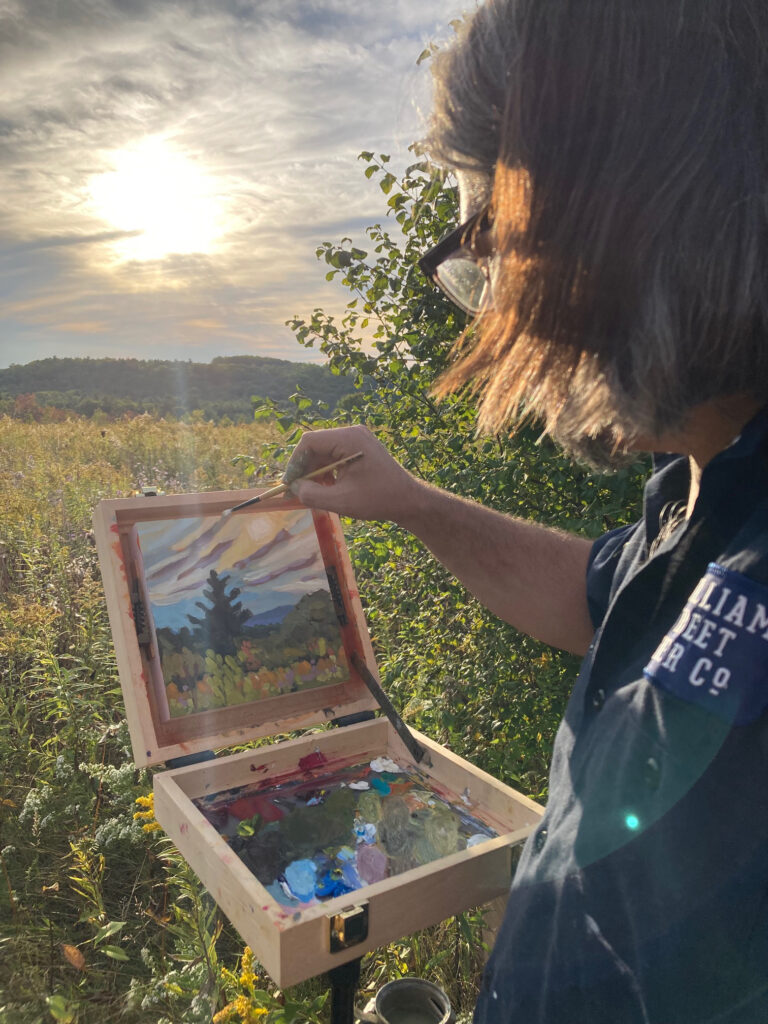
The bicycle came first. Port Hope artist Luke Despatie had been searching for a way to reconnect with the world after the pandemic. He was once a bicycle mechanic, and he enjoyed tinkering with the intricacies of even the simplest machines, had a love for a perfectly built thing. He bought a frame and put his hands to it, adding a leather saddle, new handlebars, and pannier bags.
When Luke was on his bicycle, he wasn’t looking at the world through a window. He was part of the scene. And the beauty around him didn’t blur the way it did in a car; it revealed itself. He had always painted landscapes but usually from a remove—from a photograph, in his studio. Now, he decided to paint plein air, lost in the outside world. The way he had built his bicycle, he built a pochade box, using the quoins from an old letterpress to hold panels of Baltic birch, and made himself an easel. All of it folded to fit on his bicycle. Even the water bottle holder, he noticed, was the right size for a jar of thinner. Everything fit.
Luke began riding his bicycle into the corners and sockets of Northumberland County, hunting for places and patterns of light and shadow that struck him. “It’s a challenge,” he says, “to find interest and beauty in what’s in front of you.” When he wheeled into the right place at the right time, he’d get off his bicycle, set up his easel, and begin to paint, condensing some of nature’s biggest pictures into the smallest art. Working in the open air, racing against the sky, forced him out of habits, the accumulations of tics that we call routines. He could be obsessive, get trapped by detail, in the clutches of his studio. Outside, his paintings took on a different character, less mannered and more impressionistic. Each painting took on a life of its own.
Luke took on a different character, too. On his bicycle, finding his way into a field of tall grass, painting with birdsong in his ears and maybe a friendly dog at his feet, Luke felt a kind of relief wash over him. At last, he was living his life as it was, and maybe as it was meant to be. Each of his twenty-four paintings in Field Notes is a gentle, forever reminder of the beauty all around us. Each is also a testament to the joy of escape, to the profit of letting go.
– Chris Jones Writer, friend, art lover